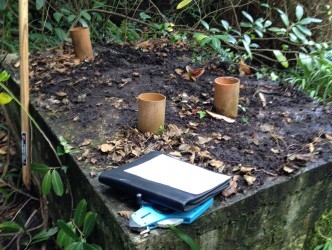
How The Septic System Works
Enter subtitle here
Grass/turf. Microbes in the earth digest most of the contaminants from wastewater. Too much wastewater over a short time frame flushes out the tank too rapidly. Odors, surfacing sewage, damp places or lush vegetation growth in the drain field area. Global innovator in processing and installing small wind turbines and off-shore ability solutions. To maintain a septic container in good working order, schedule cleanings every two to three years with a reputable provider.
It's important that people can gain access to your septic tank to ensure we can provide you with an efficient service. This guide talks about the septic container search process and lists sources of information about septic reservoir location. We illustrate who may know where buried components are located at the website, how to inspect the website, and what blunders to view for in let's assume that the information the simple truth is, read, or are advised is absolutely accurate.Try looking in the building cellar or crawl space for the point where the key building drain exits the building. See FIND MAIN Waste materials LINE EXIT - start locating the septic reservoir by finding where in fact the waste brand exits the building for details. Fiberglass tanks - Used often in hard to access” locations because they're convenient to carry. The All Purpose Septic tanks we live 3900 litres with a capacity to carry 3500 litres of wastewater. They may be manufactured internal with a baffle wall structure, which splits our septic fish tank into two compartments; this reduces the need for another grease trap tank as both the grease trap and settling tank are all in one tank. At Walsh Waste products, we can install state-of-the-art coloring CCTV equipment in the darkest, most inaccessible areas to investigate a problem with the least possible disruption to your business. The sewage treatment by the bacterias turns the waste material into effluent (wastewater) and a solid substance called sludge. The effluent gets taken to the leach drain, French drain or lagoon.About 50 percent of the solids retained in the reservoir decompose; the rest accumulate as sludge at the fish tank bottom and have to be removed regularly by pumping the container. Loosen the soil. In expresses where it's legal, some contractors can fracture compacted ground about the pipes by injecting high-pressure air in various locations about the drain field, an activity called terra-lifting.” With regards to the situation, this may cost a lower amount than $1,000 or even more than $4,000.
At Walsh Waste products, we can install state-of-the-art coloring CCTV equipment in the darkest, most inaccessible areas to investigate a problem with the least possible disruption to your business. The sewage treatment by the bacterias turns the waste material into effluent (wastewater) and a solid substance called sludge. The effluent gets taken to the leach drain, French drain or lagoon.About 50 percent of the solids retained in the reservoir decompose; the rest accumulate as sludge at the fish tank bottom and have to be removed regularly by pumping the container. Loosen the soil. In expresses where it's legal, some contractors can fracture compacted ground about the pipes by injecting high-pressure air in various locations about the drain field, an activity called terra-lifting.” With regards to the situation, this may cost a lower amount than $1,000 or even more than $4,000.